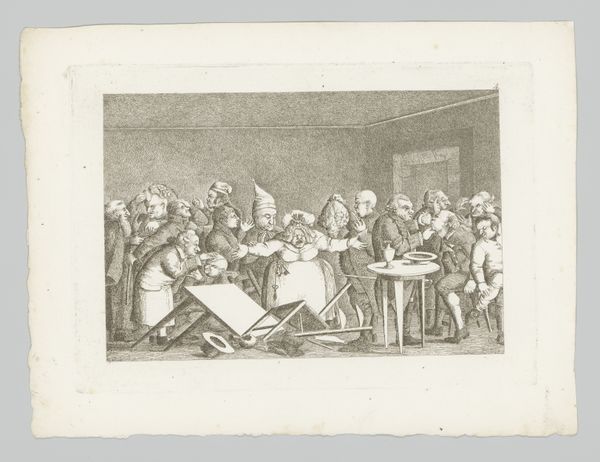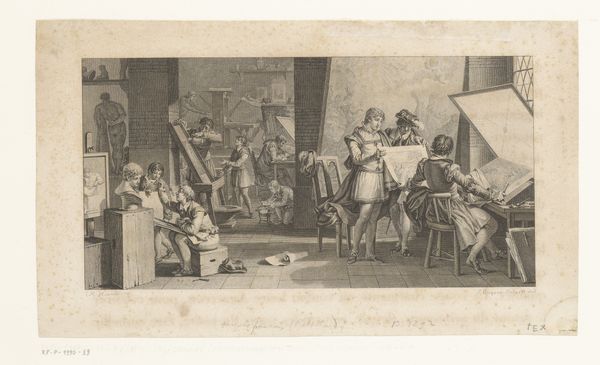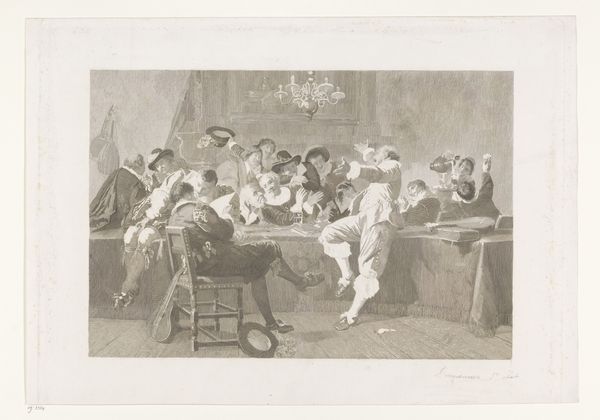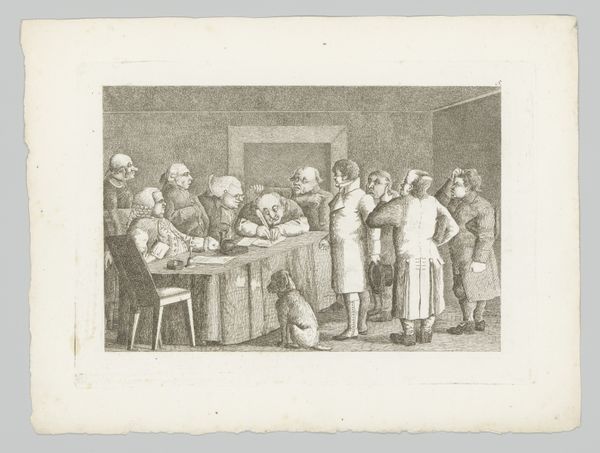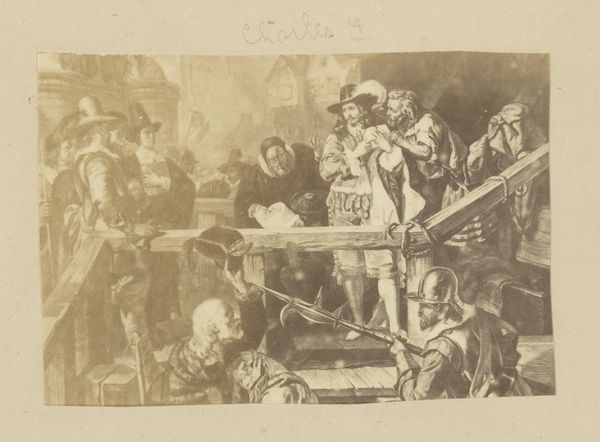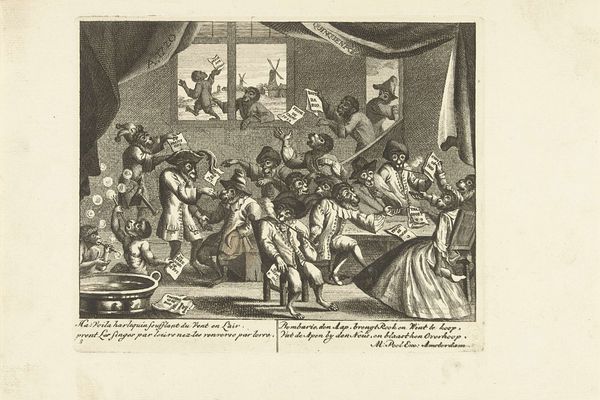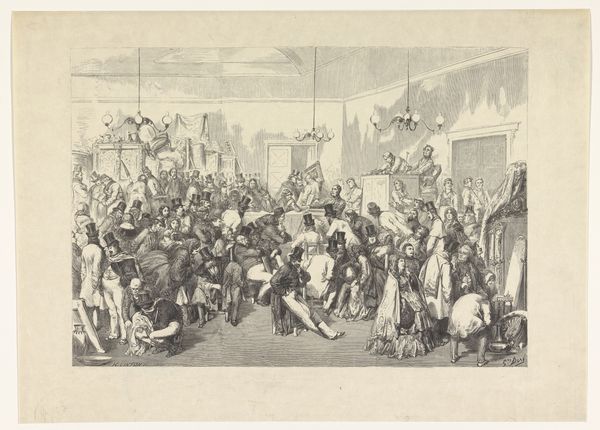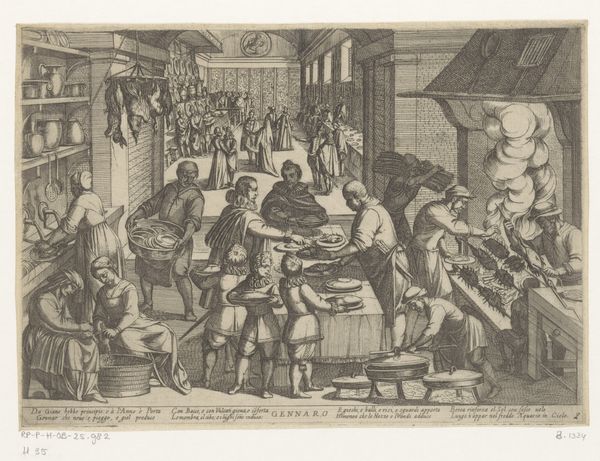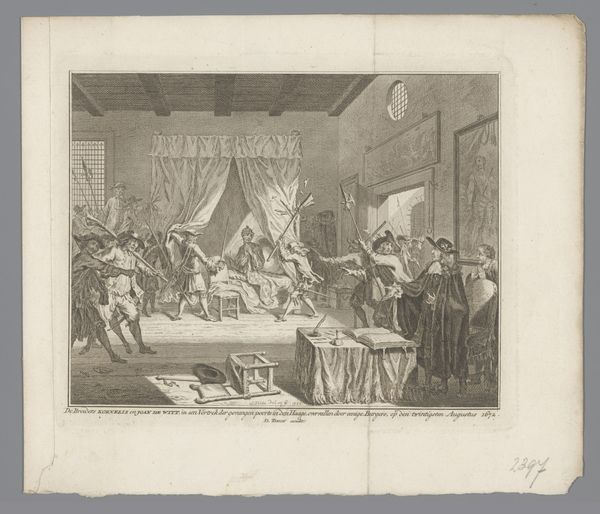
print, etching, engraving
# print
#
etching
#
romanticism
#
genre-painting
#
history-painting
#
engraving
Dimensions: height 175 mm, width 252 mm
Copyright: Rijks Museum: Open Domain
Editor: Here we have Friedrich Rottmann’s etching and engraving, "Schilder met model wordt overvallen door groep mannen," placing it sometime between 1788 and 1806. It looks like a chaotic scene unfolding, almost like a theatrical play. What's your interpretation of the historical and social context that informs this rather frenzied artwork? Curator: It’s more than just frenzy. This work screams social commentary, particularly around power dynamics and the vulnerability of artists and models in a patriarchal society. Look at the men; they’re a mob, a collective force violating the sanctity of the artist's studio, which was considered a space of intellectual and creative freedom. Consider the model, the figure who should hold control, reduced to victimhood as well. How do class and gender intersect to create this imbalance? Editor: So, you're saying that it's not just a random robbery, but a symbolic violation reflecting broader social issues of the time? Curator: Precisely. Think about the late 18th century – a period of revolution, social upheaval, and shifting power structures. The etching could be seen as a critique of those who sought to suppress artistic expression, a fear that was probably looming at that time, don’t you agree? Editor: Absolutely. The 'mob' almost seems like a personification of ignorance and oppression, attempting to silence creativity. How interesting that Rottmann highlights Romanticism, considering it valued subjectivity and individual experience! Curator: It’s Romanticism grappling with social reality. This print acknowledges that individual expression can be threatened by overwhelming societal forces. Notice the faces, they are anything but the Enlightenment celebration of reason. What statement is Rottman making about the individual versus collective agency in a time of immense social and political transformation? Editor: Wow, I initially saw chaos, but now I understand that this piece serves as a reminder that art doesn't exist in a vacuum. The etching pushes me to reconsider historical perspectives around marginalization. Curator: It is in that contextual understanding that artwork, like people, grow in profound resonance.
Comments
No comments
Be the first to comment and join the conversation on the ultimate creative platform.
